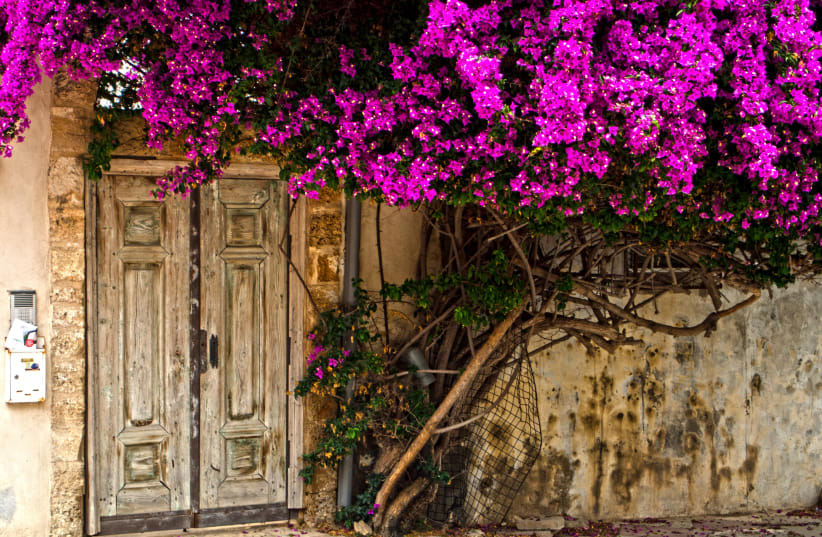Some people absolutely love Tel Aviv, whereas others can’t stand it. Yet it is certainly much more than the cultural capital of Israel or just another bustling metropolis.
The White City is chock-full of historical morsels and incredible sea and city views. Now that life is getting back to some form of normalcy after the intensive Tishrei holidays, this is a great time to get outside on a short day trip and learn a few new historical facts, have a great time and enjoy some delicious food.
Known as the Israel’s “city that doesn’t sleep,” Tel Aviv is also sometimes called “the bubble,” since many people believe it is completely cut off from the rest of the country. In my opinion, Tel Aviv – the city where I was born and still live – is much more than that. For many people, Tel Aviv is home, and they positively could not imagine living anywhere else. Tel Aviv hugs you, sweeps you off your feet and comforts you.
Each neighborhood is distinctly different from the others. They all have their own character, history, atmosphere and charm – from Hatikva, Florentin, to north Tel Aviv. One of my favorites, which definitely has its own special charm, is Neve Tzedek.
The impetus for writing about Tel Aviv came one day when I was feeling a bit melancholy and realized I desperately needed to get out of the house and just go wander around a bit. I ended up walking through one of the most touristy areas of Tel Aviv: Neve Tzedek. Built over 100 years ago, Neve Tzedek was the first Jewish neighborhood built outside of the city of Jaffa. In recent years, the neighborhood has undergone gentrification, and it is now considered one of the more fashionable areas of Tel Aviv. It is one of my personal favorites. I imagine none of the original inhabitants ever thought in their wildest dreams that Neve Tzedek would become so popular.
Some background history about Neve Tzedek: The first inhabitants in the neighborhood were a group of Mizrahi Jewish families who were seeking a new life outside of Jaffa, the crowded port city. The land for the new neighborhood was purchased from Aharon Chelouche, who believed it was important to establish a new Jewish neighborhood, and offered families a relaxed payment schedule to help them. Each new house in Neve Tzedek was constructed with its own outhouse, making the neighborhood more sanitary than Jaffa.
In the 1980s, renovation and preservation efforts began in the neighborhood. Cultural institutions such as the Suzanne Dellal Center for Dance and Theatre and the Nachum Gutman Museum were opened in old buildings that had been renovated. The Suzanne Dellal Center was established in a compound that had housed the first Jewish schools outside of Jaffa – one for boys and one for girls - where former prime minister Moshe Sharett and painter Nahum Gutman were students.
One of the most important streets in Neve Tzedek is Aharon Chelouche Street. The Chelouche family resided at No. 32. Chelouche was a money-changer who began buying up land, and according to lore was successful in part due to his physical strength. In later years, he added a synagogue onto the back of his home, as well as a cement factory.
Just south of there, you’ll find Chelouche Bridge, a small structure built over what is now a dry riverbed. According to the story, Chelouche would cross over the river in his carriage every day on his way to work in Yafo, and one day he fell off and broke his leg. Following this incident, Chelouche began gathering all the necessary permits and saw to it that a bridge was built there to make moving between the two neighborhoods safer and easier.
The next stop I recommend visiting is the Abulafia House, a yellow building located at 2 Shimon Rokach Street, on the corner of Chelouche Street. This was Shlomo and Rivka Abulafia’s house, and Shai Agnon, who was a young immigrant and an aspiring writer at the time, rented a room in their attic. Shlomo was the great-grandson of Rabbi Chaim Abulafia, who was a founder of the city Tiberias, and he was considered the head of the community and their representative for contacts with the Ottoman rulers. This house is mentioned in more than one of Agnon’s stories, which makes it clear that living there had a strong impact on his life.
If you’re in the mood for a historical visit, then your next stop should be the Nahum Gutman Museum, located at 39 Neve Tzedek Street. The newspaper Hapoel Hatzair, which was extremely popular at the time, was created there, when it was a typical apartment building. Devorah Baron, Yosef Aharonovitch and Yosef Haim Brenner, three writers who had a strong influence on the character of the neighborhood, shared a flat in the building, which became a popular meeting place for other writers. In recent years, the building was renovated and reopened as the Nahum Gutman Museum.
If you’d rather experience Tel Aviv on a guided tour, during which you’ll hear lots of interesting stories and anecdotes, I recommend joining tour guide Dana Satvy, who is a tour blogger and a photographer. Satvy, who is smiley and energetic (you’d never know she is a brave cancer survivor), was the community coordinator in the neighborhood for six years, and so she knows every nook and cranny. The neighborhood has taken on a French vibe in recent years, and boasts a number of glamorous art galleries, patisseries and boulangeries. Satvy offers tours for groups of five or more participants for NIS 250 per person, which includes coffee and other yummy tastings along the way, as well as a photography workshop. Vegan and kosher food options available.
Details: www.danatime.com, 050-541-8675
Translated by Hannah Hochner.

